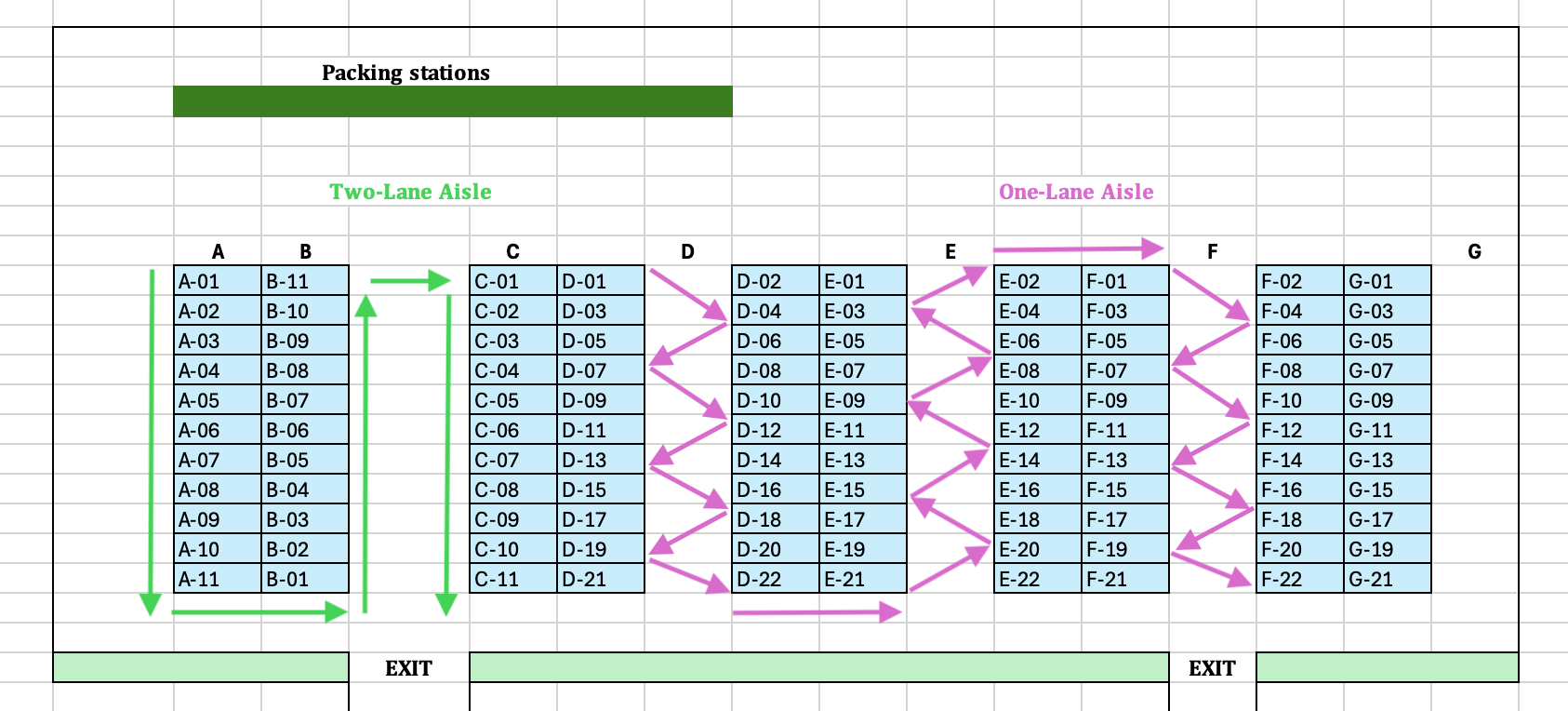Streamlining Your Warehouse Layout with an Effective Naming Scheme
This article addresses several critical components of making sure the layout of your warehouse is efficient and labeled accordingly so your team and processes run smoothly.
Once you define the areas of your warehouse and develop how you want to name and label your racking systems, you can move on to mapping your warehouse in ChannelDock and assigning different properties to your locations in the system.
Creating an efficient naming scheme for your warehouse locations
When setting up your warehouse locations, one of the most critical elements is developing a naming scheme that not only optimizes the picker’s path but also ensures consistency throughout the entire warehouse. A common and effective format is: Zone-Aisle-Rack-Shelf-Bin.
• Zones: Designate specific areas of the warehouse based on criteria like item size, picking frequency, or storage requirements. For example, Zone 1 might house pallets or bulky items requiring specialized equipment, while Zone 2 could be reserved for smaller items easily accessible by hand.
• Aisles: These are the rows of products running parallel to each other. The aisle width depends on factors like product dimensions and the tools used for picking.
• Racks: Also called bays, these are the shelving units within each aisle. The rack number tells pickers where to stop and retrieve items within a given aisle.
• Shelves: Different levels on a rack. The shelf designation identifies the height at which the item is stored.
• Bins: The final position within the scheme, identifying the exact location on the shelf where the item resides.
For example, a product located at 1-A-03-B-03 would be found in Zone 1, Aisle A, Rack 03, Shelf B, and Bin 03.
Labeling your warehouse racks and shelving
Two primary labeling approaches exist: serpentine and standard. The serpentine method is often preferred due to its efficiency. It allows pickers to move fluidly up and down aisles without doubling back or missing locations, streamlining the picking process.
If your warehouse has wide aisles allowing two-way traffic, the aisle name is often tied to the racking units themselves, as shown by the GREEN path in the diagram. For narrower, one-way aisles, it’s best to label racks on opposite sides with odd and even numbers. This creates a natural zig-zag picking path, as shown by the PURPLE path in the diagram.
Best practices for warehouse location labeling
• Number from the bottom up: If you need to adjust shelf heights as your operation scales, you won’t have to redo the entire labeling system.
• Use leading zeros: For any numbers below ten, such as 01, 02, etc., leading zeros help ensure that locations are sorted alphanumerically and future-proofed for growth.
• Stay consistent: All bin locations should follow a uniform format and length to avoid confusion and ensure easy sorting. For example, choose between using A-01-01 or A-1-1, but avoid mixing formats like A-01-1 and A-1-01.
By adopting a structured naming scheme and sticking to these best practices, you’ll not only optimize your warehouse operations but also set a foundation for easy scalability as your business grows.

